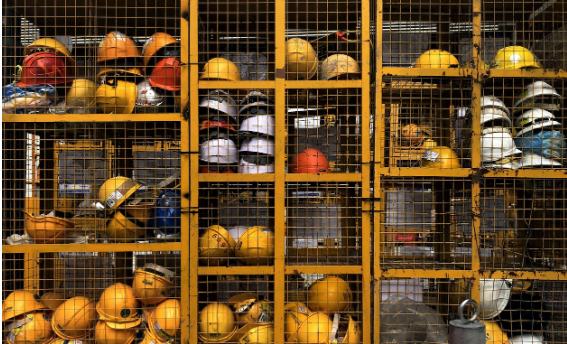nvironments are susceptible to hazards, from outdoor sites to standard office spaces. It’s the employer’s role to create a work environment free from accident and injury risks to keep the workforce productive and satisfied. Awareness of hazardous practices and activities is crucial in designing an incident-free work environment. Additionally, identifying infrastructure vulnerabilities and taking preventive measures are also of paramount importance in preventing workplace injury.
What is EHS?
Organisations must take measures to protect the environment and their workforce, and this is where EHS can help. If you’re looking for EHS meaning, you’ll learn that it stands for Environment, Health, and Safety and refers to a series of issues and solutions that target both the people and the environment.
Environment, health, and safety solutions are essential for all companies because they allow businesses to reduce their environmental impact, boost workplace safety, and save money. EHS approaches are evolving rapidly and require companies to re-examine their priorities, processes, strategies and workflows. Businesses across all industries should embrace the latest trends to establish strategic priorities for the coming period.
This is an overview of the most important trends and predictions in the EHS sector.

Wearable devices
Personal protective equipment is essential in preventing injuries and an important part of workplace safety apparel. These protective elements act as the first line of defence in case of an accident. Improvements in wearable devices and the miniaturisation of sensors enable companies to transform their personal protective equipment into smart devices. Nowadays, smart PPR can monitor the environment and employees, and it comes with a panic button that can be triggered automatically or manually in case an accident happens. Advances in wearable technology have triggered the development of exoskeletons that assist employees in activities such as prolonged standing, climbing, or lifting, removing the risk associated with such tasks. Besides the above examples, some EHS solutions focus on creating safer office environments where employees can easily monitor their vital signs and keep track of their health. Furthermore, professionals in tree care who operate in cold stress conditions can derive advantages from utilizing intelligent personal protective equipment. This EHS trend provides companies with real-time safety and health data about workers from different locations.
Workplace safety reporting systems
Communication is crucial in efficiently operating a safety management system. Some organisations still rely on traditional practices that involve paper and spreadsheets, but unfortunately, they make mundane tasks like reporting a workplace incident repetitive and challenging. Moreover, because they lack a live self-updating system, they might overlook important data because it’s difficult to salvage everything when manually entering data. Cloud computing, digital innovations, and API development tactics facilitate the introduction of software that automates safety management practices. Organisations can use mobile and web-based systems to improve incident management, permit management, employee risk management, safety compliance, and audit management. Completing these tasks flawlessly boosts the transparency of safety issues in the work environment.
Industrial Internet of Things
Factories find it challenging to monitor workplace safety when managing large premises. Sometimes even businesses with small offices struggle to manage hazardous conditions. Manual monitoring of working conditions isn’t ideal for any kind of business, regardless of its size. Industrial Internet of Things solutions can bring innovations like smart devices and sensors that continually monitor the infrastructure and surroundings. Among IIoT devices, the most popular are those that feature hazardous material sensors that overview the levels of toxic gasses and those that capture machine parameters to provide information about the equipment’s condition. This EHS trend offers real-time information that enables safety managers and engineers to identify problems and prevent potential hazards.
Collaborative robots
The best EHS solution is to prevent hazardous activities that could cause employee ailments or injuries. Collaborative robots are innovations that allow businesses to minimise employee effort in material handling tasks and high-risk lifting activities. Robots can do risky jobs or lift heavy items in place of employees to prevent back injuries and other similar injuries. They also enable companies to protect employees by not exposing them to hazardous spaces with extreme heat or chemical substances. Besides having warehouse and manufacturing applications, collaborative robots are also beneficial for healthcare environments and the hospitality industry. This trend lowers the risk of ergonomic hazards associated with repetitive tasks.
Artificial intelligence
An accident is the result of a chain of events, culminating in an employee injury, infrastructure damage or employee death. The digitalisation of workplaces gives companies access to extensive data that can provide them with information about the work environment at all moments. Digitalised systems often include employee logs, environment sensor data, surveillance images, and equipment sensor data. AI advancement enables the creation of solutions that collect insights from data sets to improve workplace safety. AI solutions use machine learning algorithms to identify patterns and detect anomalies that might signal an accident. This workplace safety trend helps organisations identify hazards early and predict failures so they can take proactive actions to prevent accidents.
Drones
Even if detectors and sensors are installed in a workplace, visual inspection is required to ensure the equipment is functioning and meeting safety codes. Often sensors don’t provide the whole picture for facilities like mines, power plants, construction sites, gas plants, and utility grids. EHS managers need to inspect the premises visually to ensure the infrastructure doesn’t pose a risk of accidents. Autonomous and remotely controlled drones can prove extremely useful in such instances because they’re safer alternatives to sending an individual to the facilities. Drones featuring cameras and essential tools can collect information about safety metrics and remove the possibility of human error.
2023 workplace health and safety trends will revolutionise the sector
The above workplace safety innovations can reduce the number of unsafe processes and hazards in the workplace. Smart wearable devices can be used to monitor the work premises and employees and call for assistance when a hazard is detected. IIoT and AI solutions can monitor anomalies and provide EHS managers and engineers with the necessary information to make adjustments.




